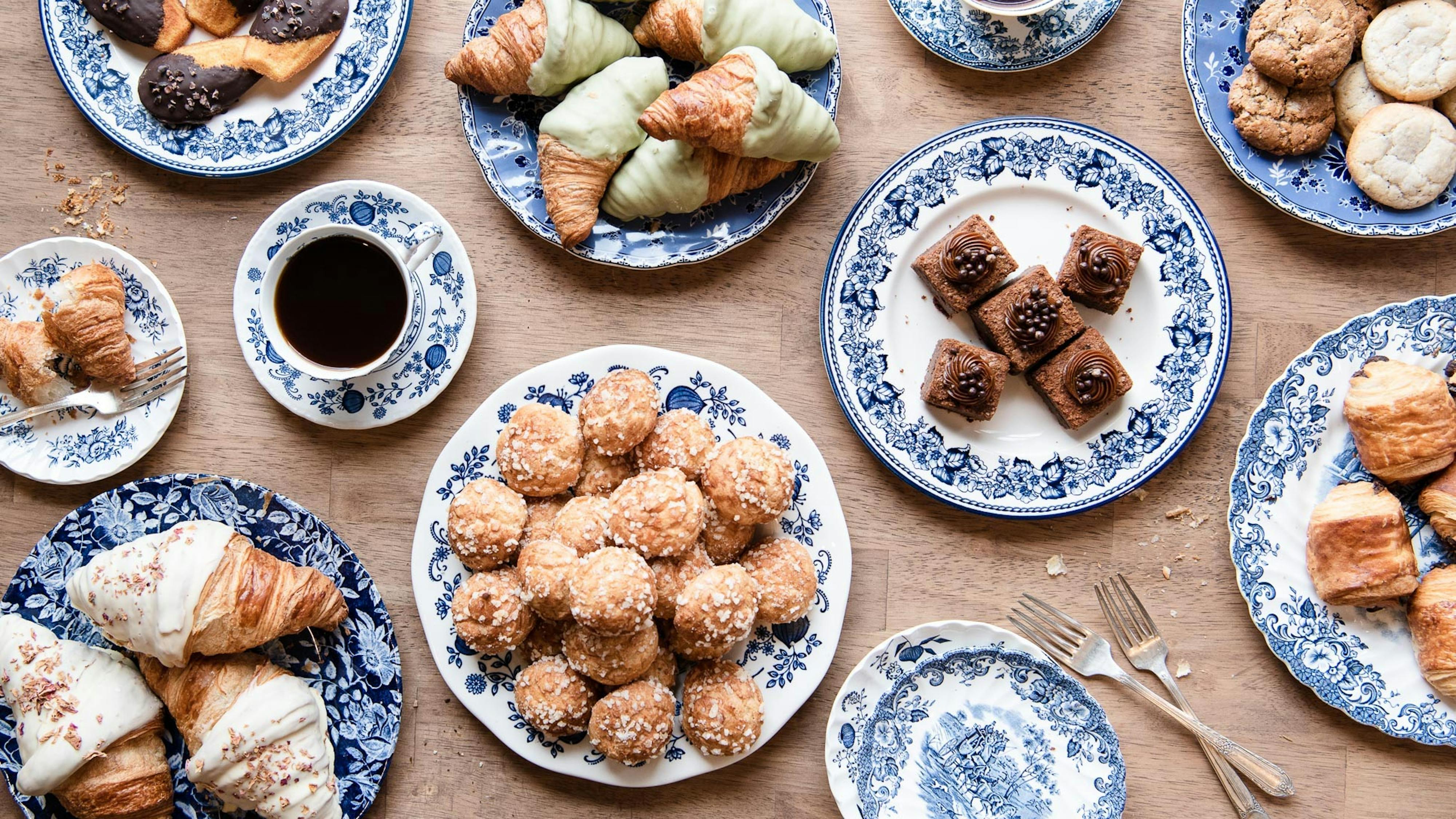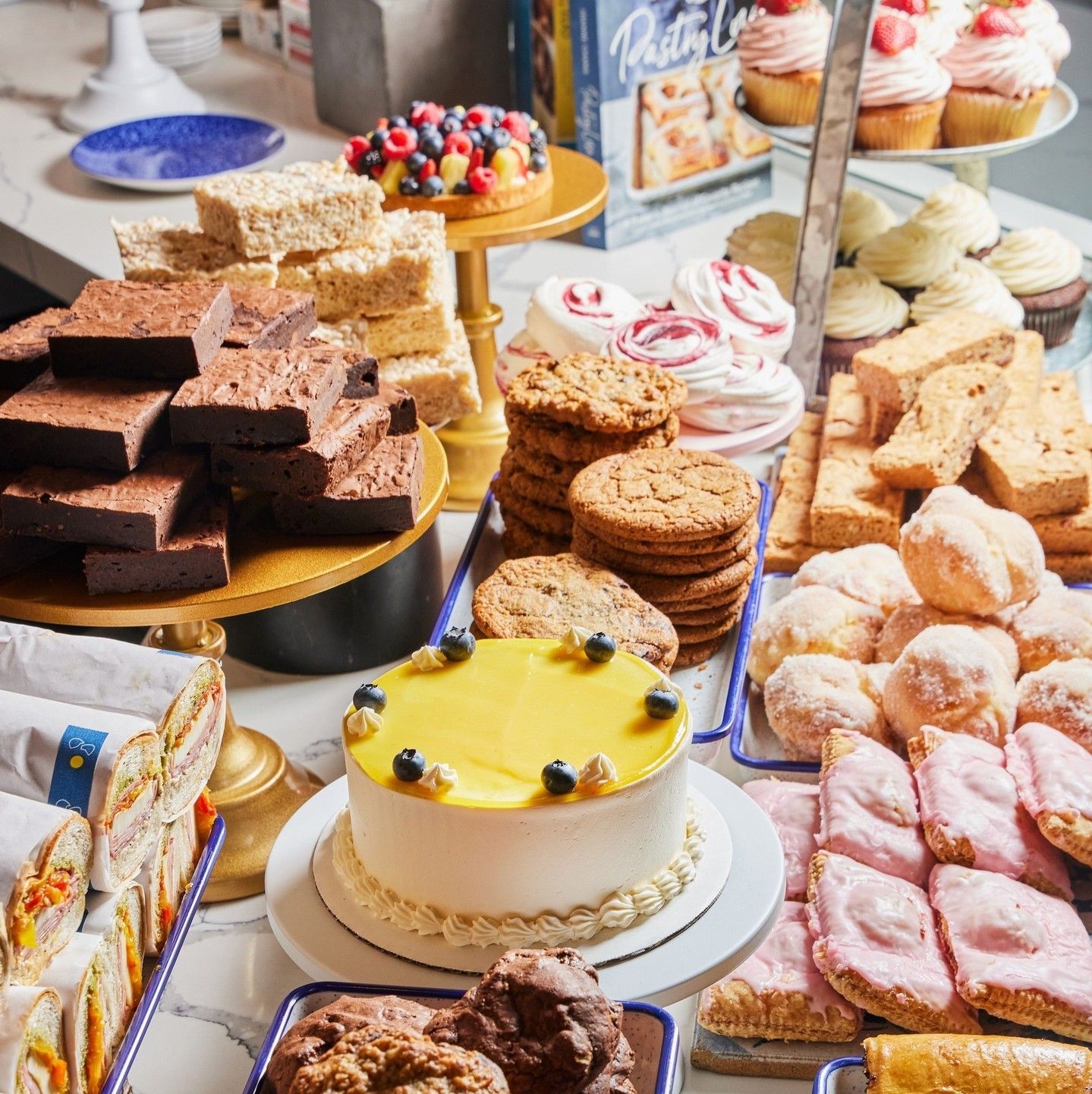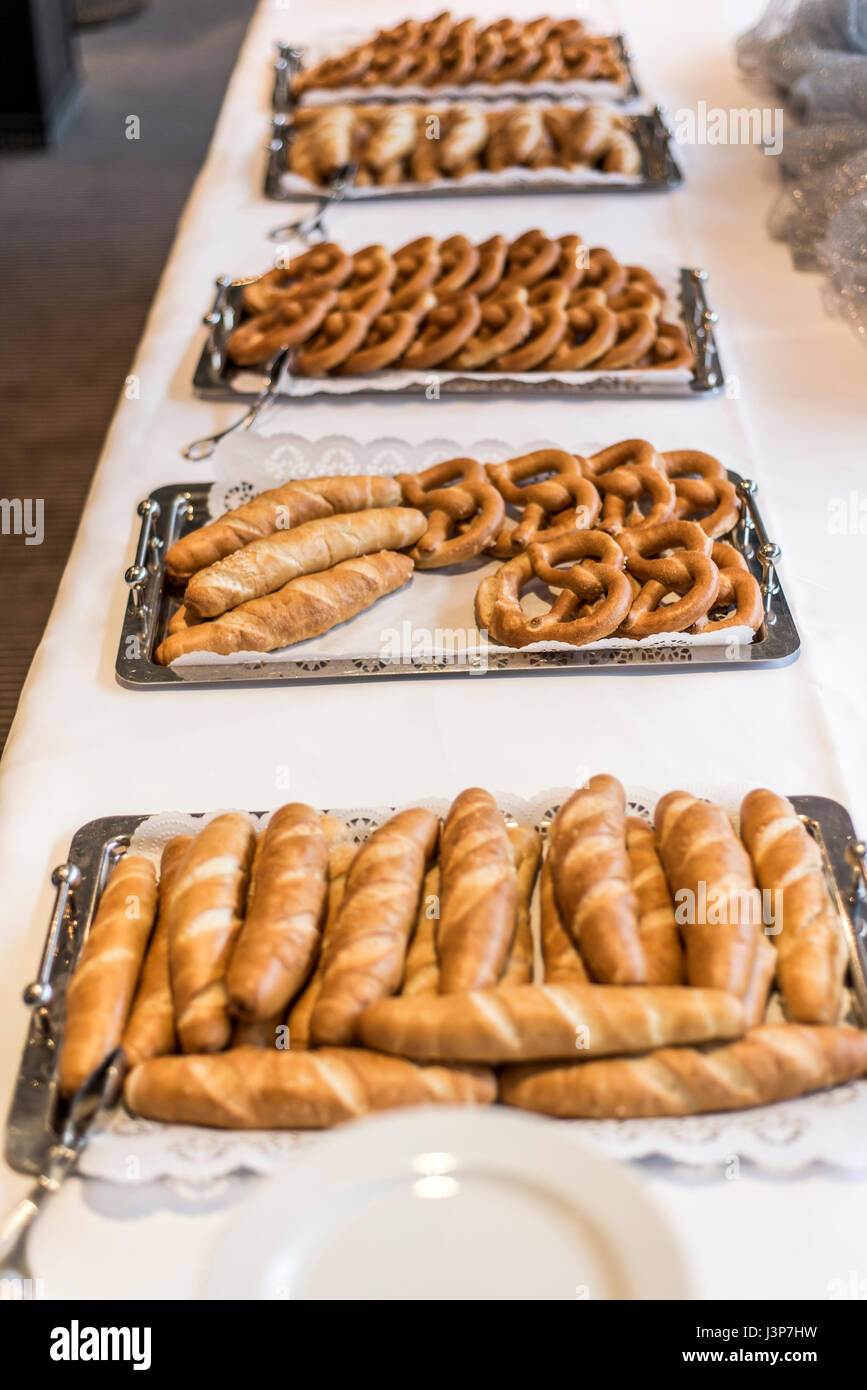Delicious Options in Finger Food Catering Maddington for All Ages
Delicious Options in Finger Food Catering Maddington for All Ages
Blog Article
Recognizing the Art of Pastry Shop Products: From Newly Baked Breads to Alluring Pastries and Finger Foods
From the science behind the excellent loaf of bread, where fermentation and gluten advancement play pivotal functions, to the skill needed for creating split pastries, each aspect discloses an engaging story of workmanship. The versatility of finger foods highlights how flavor and texture can be skillfully incorporated to involve varied taste preferences.
The Science of Bread Making
At the heart of every loaf of bread lies an interesting interaction of chemistry and biology. The process of bread making starts with the combination of flour, water, yeast, and salt-- each ingredient playing a critical role in the end product. Flour has proteins, largely glutenin and gliadin, which, when blended with water, kind gluten (Finger Food Catering Maddington). This elastic network is important for capturing gases generated throughout fermentation.
Yeast, a living microorganism, ferments the sugars existing in the flour, creating co2 and alcohol at the same time. The co2 gas creates bubbles in the dough, causing it to rise and establish a light structure. The temperature and humidity during fermentation substantially affect yeast activity and, subsequently, the bread's flavor and structure.

Learning Bread Techniques
Exactly how can one achieve the fragile equilibrium of texture and taste that specifies extraordinary bread? Understanding pastry techniques needs a deep understanding of components, methods, and the scientific research behind them. Basic to this craft is the option of top notch components-- flour, butter, sugar, and eggs-- each playing a critical function in the last item's flavor and appearance.
The method of lamination, which includes folding layers of dough and butter, produces the wanted flakiness in breads like croissants and smoke pastry. Precision in temperature level is essential, as butter needs to continue to be cold to ensure optimal layers. Likewise, proper blending approaches, such as the creaming technique for cakes, make certain also incorporation of air and fat, resulting in a light and ventilated crumb.
Additionally, keeping the ideal humidity levels during cooking can considerably influence the end result, guaranteeing that pastries climb correctly and achieve that golden-brown finish. Finally, the art of pastry additionally requires persistence and technique; each effort improves one's ability and understanding of the detailed equilibrium called for to create irresistible pastries that delight the senses. Proficiency in these strategies eventually differentiates a knowledgeable bread chef from an amateur.
Types of Finger Foods
The world of culinary thrills extends past pastries to encompass a wide array of finger foods, which are commemorated for their ease and convenience. These bite-sized deals with are ideal for social gatherings, using a great site variety of tastes and textures that accommodate diverse tastes.

On the sweeter side, tiny tarts and bite-sized cupcakes provide a fascinating finish to any type of meal, attracting those with a craving for sweets. Cheese and charcuterie boards serve as a sophisticated choice, allowing guests to tailor their bites with a selection of meats, fruits, cheeses, and nuts.
Taste Profiles in Baking
Baking is a complex dance of flavor accounts that combines wonderful, mouthwatering, and umami notes to produce a harmonious experience for the palate. Understanding these accounts is necessary for bakers seeking to elevate their productions.
Sweetness commonly acts as the foundation in baked goods, with sugars, fruits, and natural sugar enhancing taste deepness. Components such as chocolate and caramel introduce intricate wonderful notes that can either dominate or complement other flavors. Conversely, mouthwatering components, commonly found in breads and pastries, give equilibrium and comparison. Components like spices, cheeses, and natural herbs can change a simple dough into a multifaceted flavor experience.
Umami, often forgotten in cooking, plays a substantial function in enriching flavors. Components such as aged cheeses, fermented items, or also certain nuts contribute to a full-flavored depth that enhances overall taste.
In addition, the interaction of level of acidity from ingredients like buttermilk or citrus enthusiasm can lighten up tastes, supplying a refreshing counterpoint to sweetness. By thoughtfully combining these taste profiles, bakers can craft products that reverberate with diverse tastes, creating an extraordinary culinary experience. Ultimately, mastering taste accounts is crucial to development in the world of cooking.
Necessary Baking Devices and Active Ingredients
Understanding taste profiles in cooking sets the stage for choosing the right devices and components that facilitate the creation of exceptional baked products. The foundation of successful cooking hinge on having necessary tools at hand. Key things include blending bowls, measuring cups, and spoons for accuracy, as well as a strong stand mixer or hand mixer for effortless mixing. A reliable set of baking pans-- such as sheet pans, loaf pans, and cake frying pans-- is important for attaining wanted textures and shapes.
Flour serves as the foundation of many dishes; choosing the ideal type-- be it bread, bread, or all-purpose flour-- can considerably affect the result. Baking powder and baking soft drink are important for producing lift in cakes and breads.
Additionally, incorporating taste boosters like vanilla essence, flavors, and citrus passion can elevate your productions. By guaranteeing access to see this here these essential tools and components, bakers can confidently embark on their culinary trip, crafting a diverse selection of wonderful baked products.
Conclusion
Proficiency in read this bread making, pastry prep work, and finger food presentation reveals the intricate relationships in between components and processes. Birthday Party Maddington. Discovering diverse flavor profiles enhances the baking experience, while vital tools and active ingredients give the foundation for success.
How can one attain the fragile balance of appearance and taste that defines remarkable bread? Essential to this craft is the selection of top quality active ingredients-- flour, butter, sugar, and eggs-- each playing a critical function in the final item's flavor and appearance.

Recognizing flavor profiles in baking sets the stage for selecting the right tools and components that assist in the production of extraordinary baked products. Checking out varied flavor profiles enhances the baking experience, while vital devices and components supply the structure for success.
Report this page